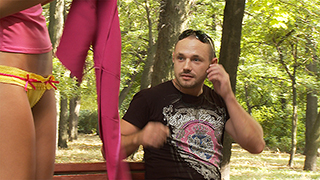
_best-just-for-laughs-gags-part-01-1080p-best-funny-prank-2019-preview-hqdefault.jpg)
Each is a series of gag strips with a common theme. Sergio Aragonés has written and drawn his "A Mad Look At." feature for 49 years.
#Gags naked and funny cracked
In 1994, Martin left Cracked and published a handful of issues of his own self-titled publication. Not long after leaving Mad, Martin ended up working at Mad's competitor Cracked, which, unlike Mad, allowed creators to keep their pages. Martin's 31-year association with Mad ended in some rancor over the ownership of his original artwork. Many of his cartoons used similar titles (e.g., "One Exceedingly Fine Day at the Beach"), and these titles became increasingly elaborate (e.g., "One Night in the Acme Ritz Central Arms Waldorf Plaza Statler Hilton Grand Hotel", "One Hot Sunny Afternoon in the Middle of the Ocean", or "One Fine Day at the Corner of South Finster Boulevard and Fonebone Street"). When Martin first joined Mad, he employed a nervous, scratchy art style, but this developed into a rounder, more cartoony look. Martin's wild physical comedy would eventually make him the signature artist of the magazine.

Martin's absurd sight gags were frequently punctuated by an array of onomatopoeic sound effects such as "GLORK" or "PATWANG-FWEEE", coined by Martin himself (or by frequent ghost writer Don Edwing).
#Gags naked and funny code
However, the original Morse Code byline "by Prohias" remains in each strip's title.ĭon Martin, billed as "Mad's Maddest Artist", drew gag cartoons, generally one page but sometimes longer, featuring lumpen characters with apparently hinged feet. Spy" continued in a series of different hands until 1997, when Peter Kuper took over as the full-time writer-artist. Although Prohías retired from doing the strip in the late 1980s, "Spy vs. A female "Grey Spy" occasionally appeared unlike her two adversaries, she always prevailed. There was no pattern or order dictating which spy would be killed in a particular episode. Typically, the trap would boomerang back on whichever spy had concocted it. The strip was a silent parable about the futility of mutually-assured destruction, with various elaborate deathtraps designed in Prohías' thick line. Except for the respective black/white color of their clothing, the two spies were identical in appearance and intent. Spy," the never-ending battle between the iconic Black Spy and White Spy, ended up outlasting the Cold War that inspired it.

These consist of reprinted Berg strips, with rewritten word balloons that change the gags to references about disease, sex offenders, corpse disposal and other unsavory, un-Berg-like topics.Īntonio Prohías's wordless " Spy vs. In 2007, an occasional feature called "The Darker Side of the Lighter Side" debuted. These last "Lighter Side" strips were divided among 18 of the magazine's regular artists, including Jack Davis' last original work for Mad. The feature was retired with Berg's death.įour months after the last Berg artwork was published, his final set of gags, which Berg had written but not penciled, appeared as a tribute. "The Lighter Side" was more pointed in its early years, providing the sort of Americana-based humor that standups such as Shelley Berman and Alan King performed successfully onstage. Although this feature eventually became notorious for its corny gags and garishly outdated fashion choices, the Mad editors reported that it was the magazine's most popular feature. Subjects commonly lampooned include medicine, office life, parties, marriage, psychiatry, shopping, school and other everyday activities. From 1961 to 2002, Dave Berg produced "The Lighter Side of.", which often satirized the suburban lifestyle, capitalism and the generation gap.


 0 kommentar(er)
0 kommentar(er)
